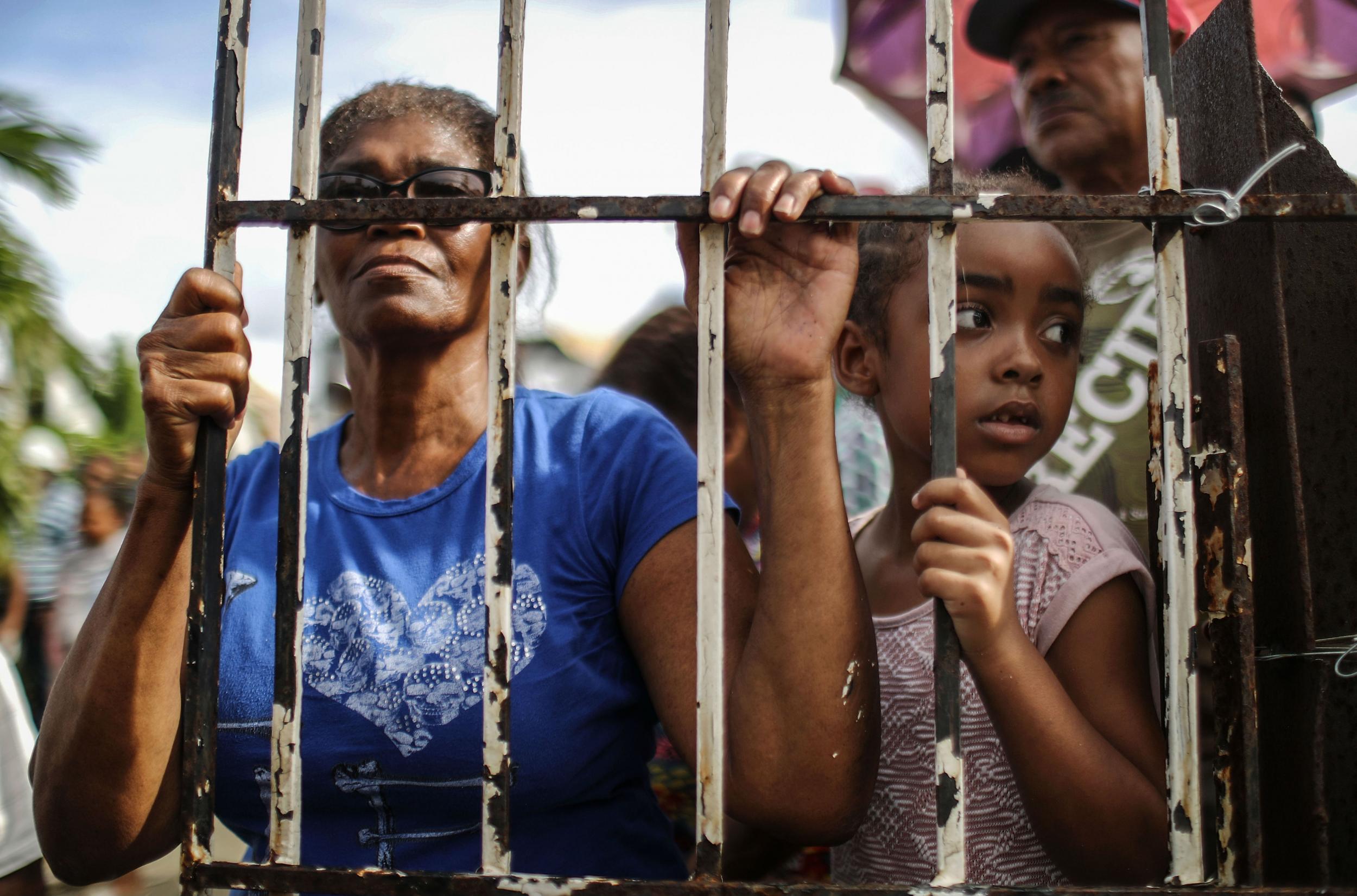Puerto Rico: One in seven citizens could leave island still crippled by Hurricane Maria
A third of households still have no access to clean drinking water

Your support helps us to tell the story
From reproductive rights to climate change to Big Tech, The Independent is on the ground when the story is developing. Whether it's investigating the financials of Elon Musk's pro-Trump PAC or producing our latest documentary, 'The A Word', which shines a light on the American women fighting for reproductive rights, we know how important it is to parse out the facts from the messaging.
At such a critical moment in US history, we need reporters on the ground. Your donation allows us to keep sending journalists to speak to both sides of the story.
The Independent is trusted by Americans across the entire political spectrum. And unlike many other quality news outlets, we choose not to lock Americans out of our reporting and analysis with paywalls. We believe quality journalism should be available to everyone, paid for by those who can afford it.
Your support makes all the difference.As many as 500,000 people - as much as 14 per cent of the population - could leave Puerto Rico for good in the aftermath of Hurricane Maria’s destruction, a new report suggests. The exodus would have a devastating impact on the island’s already stagnant and flailing economy.
A month after the category four storm made landfall with winds of up to 155mph, the first hurricane of such strength since 1932, around 90 per cent of the island remains without electricity. Hundreds of thousands of people are scrambling to find fuel, food and clean water, and to access medical services.
A report published by the Centre for Puerto Rican Studies at Hunter College, part of the City University of New York, suggests between 114,000 and 213,000 residents will leave the island over the next 12 months.

It suggests that by 2019, up to 470,335 residents could have left for the US mainland, mostly to the states of Florida and New York.
“In other words, Puerto Rico will lose the same population in a span of a couple of years after Hurricane Maria, as the island lost during a prior decade of economic stagnation,” says the report.
“Our projections indicate that Florida is the state most likely to be affected by the exodus.”
Since the storm struck, the Trump administration has been trying to fight off accusations that it has done insufficient to help the residents of Puerto Rico, especially when compared to how it dealt with powerful storms that tore through Florida and Texas.
Mr Trump, who has engaged in a series of back-and-forth insults with the mayor of San Juan, has said the island should do more to help itself. He also said the claims of Carmen Yulín Cruz, who said her residents had been left to die, were politically motivated.
The Federal Emergency Management Agency (FEMA) said this week it had 1,700 personnel deployed in Puerto Rico and the US Virgin Islands. Around 2,600 FEMA staff remain deployed to Hurricane Harvey, nearly two months after that storm hit the Gulf Coast of the mainland US.
As emergency officials appeal to islanders not to drink water that may be contaminated, CNN said 35 per cent of households still did not have access to safe drinking water.
Professor Edwin Meléndez, Director of the Centre for Puerto Rican Studies at Hunter College and co-author of the report, said the depopulation they estimated for Puerto Rico, using an econometric model of the costs of storms over the last 60 years, would be similar to that experienced by New Orleans, after Hurricane Katrina struck in 2005. Today, the Louisiana city’s population is 20 per cent less than it was before Katrina hit.
He told The Independent the major driver for people leaving Puerto Rico was employment opportunities. He said following Maria, infrastructure had been badly damaged, hotels were not hiring people and around 80 per cent of agricultural crops had been destroyed.
He said others researchers had found Maria could lower Puerto Rican incomes by up to 20 per cent over the next 15 years, a cost of $180bn to the island’s economy.
“We will need to wait for the release of data on employment and net movement of passengers in the months after Hurricane Maria to fully assess the exodus of Puerto Rico residents to stateside communities,” his report adds.
“Yet the impact of Hurricane Katrina on the population exodus and ensuing unemployment in New Orleans offer an example of what lies ahead for Puerto Rico.”
Join our commenting forum
Join thought-provoking conversations, follow other Independent readers and see their replies
Comments